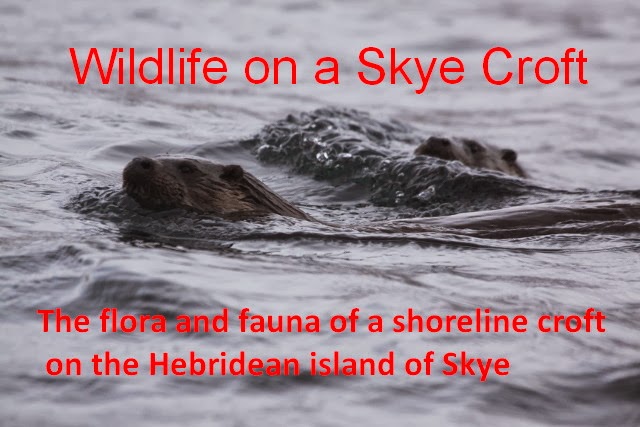.JPG) |
| Sweet vernal grass |

The dominant grasses in our hay meadow are Yorkshire fog, viviparous fescue, common bent and sweet vernal grass with patches of purple moor grass and occasional crested dog's-tail. Common sedge, oval sedge, starry sedge and green-ribbed sedge are frequent in the damper areas. Soft rush and bracken are the aspirationally dominant plants and have to be kept in check. More colourful plants include bluebells and pignut in May, and at the moment meadow buttercups (creeping buttercups in the only area that I think was once dug over), and devil's-bit scabious. This assemblage seems fairly consistent with the 2003 survey.
Rather than gathering the hay up I now leave the grass in place, raking it over a little so it dies down and provides a little nutrient, equivalent to autumn grazing, and it is noticeable that bluebell seeds germinate well under the mown grass. I disturbed a toad during the cut but surprisingly no field voles.
Areas where the orchids flowered have been left for a later cut in September and October, as they are just at the point of developing seed pods. I do rake the grass off those areas to keep the level of nutrients low - which is not too difficult - and it seems to benefit the orchids.
 There have been no mammals to report, other than a few pipistrelles at dusk. Reasonably regularly in July and August in the past we have had a sighting of dolphins but not so far this year. We therefore went up towards Staffin at the north end of Skye where there is a more reliable viewpoint and sure enough we had a twenty minute view of probably 20 or so dolphins (maybe common dolphins but I cannot be certain) in the channel between Skye and Rona. Too far away to get a photograph - fortunately as I had left my camera at home. Here is a picture taken four years ago in Loch Ainort of bottle-nosed dolphins
There have been no mammals to report, other than a few pipistrelles at dusk. Reasonably regularly in July and August in the past we have had a sighting of dolphins but not so far this year. We therefore went up towards Staffin at the north end of Skye where there is a more reliable viewpoint and sure enough we had a twenty minute view of probably 20 or so dolphins (maybe common dolphins but I cannot be certain) in the channel between Skye and Rona. Too far away to get a photograph - fortunately as I had left my camera at home. Here is a picture taken four years ago in Loch Ainort of bottle-nosed dolphinsInsects have been the main focus of attention. Dragonflies are on the wing, a black darter and common dragonfly perched long enough to allow a decent view.
.JPG) |
| Black darter |
.JPG) |
| Common dragonfly |
 |
| Common blue |
Scotch argus butterflies are everywhere though they do seem to have a preference for the damper areas. I also found a Common blue butterfly down by the shore.
 |
| Scotch argus |
I nearly forgot; I found another sedge on the croft, pale sedge. Only a few plants but that brings the number of Carex species up to 8.
.JPG) |
| Pale sedge |

.JPG)
.JPG)